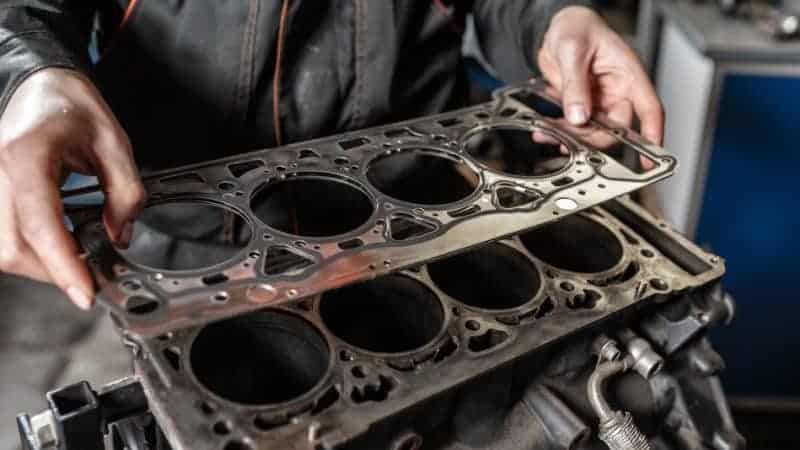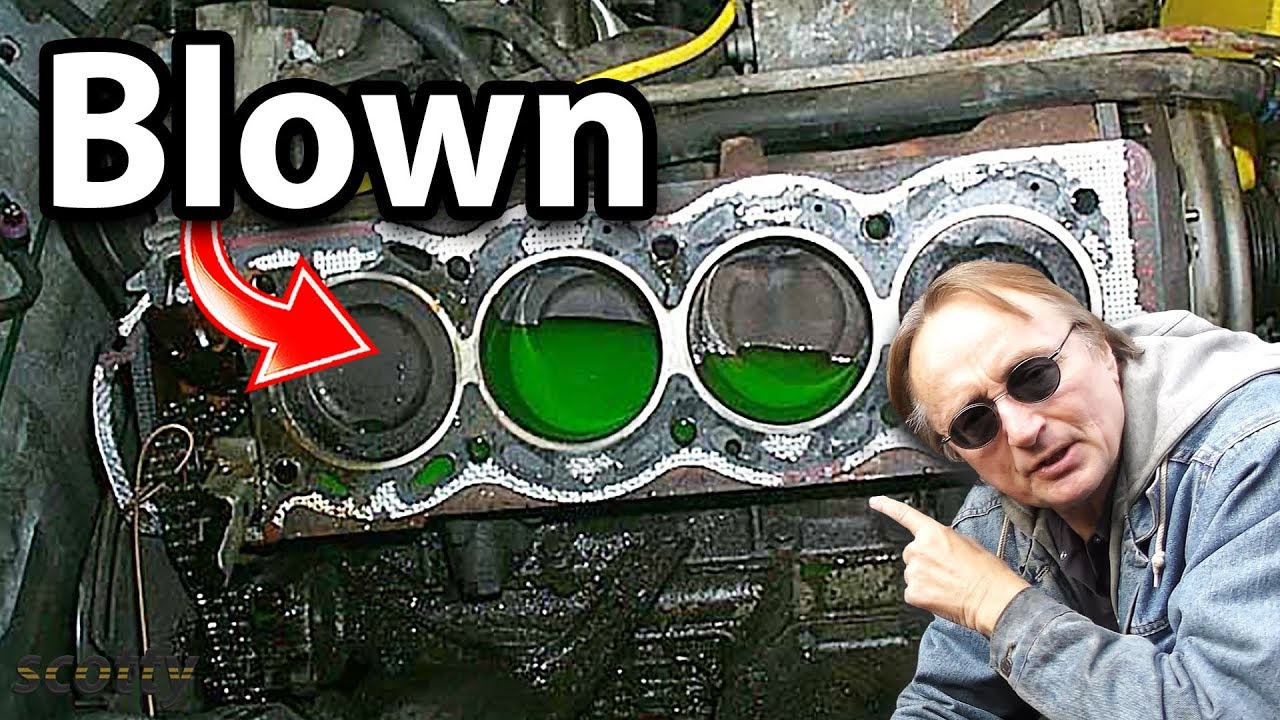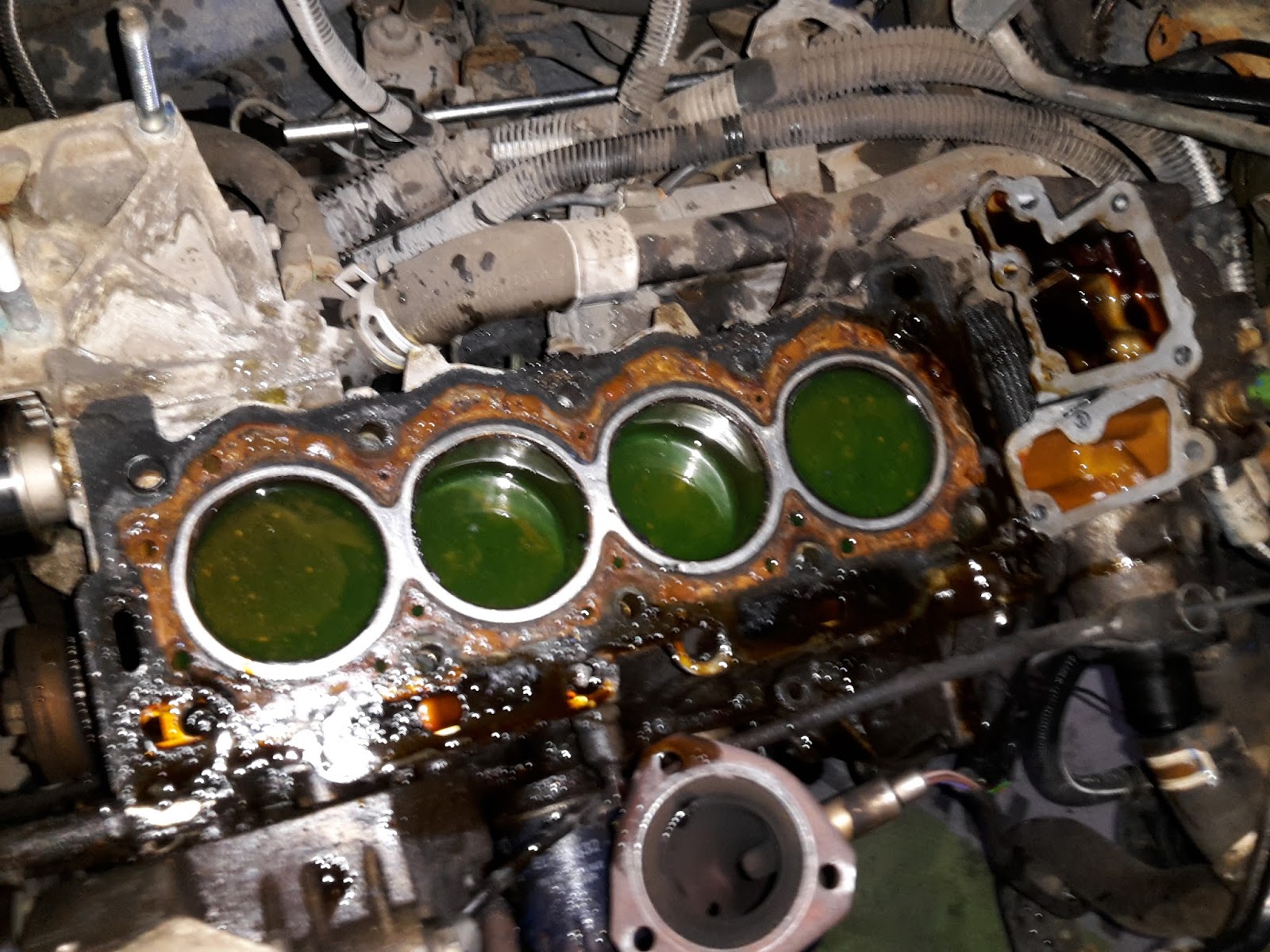While cylinder head gasket leaks may not happen often, they are a major issue for automobile owners when it comes to engine problems. To keep the combustion chamber leak-free, the head gasket is absolutely necessary.
To maintain an ideal combustion cycle, it seals the engine and prevents the cylinder from being mixed with engine oil and coolant. Damage from a blown head gasket can be devastating. Before you end up spending a pretty penny fixing your engine, you can save a lot of money by fixing a cylinder head gasket leak with a good sealer.
When the Head Gasket is Leaking, is it Safe to Drive?

The smallest cylinder head Baker leak can quickly become a major one. Fix the leak immediately before it becomes a costly repair job by paying close attention. Running with a head gasket leak could be safe for a while, but there’s no telling what can happen next.
As soon as the leak becomes apparent, it may pour a large amount of coolant into the floor or into the combustion chambers. That is why stopping the leak in its tracks is the best course of action. You put your engine at greater risk of a catastrophic gasket leak the longer you continue to drive with even a little leak.
Warning Signs of a Head Gasket Leak
To fix a leaking or blown head gasket and prevent major engine components from damage, it is vital to recognize the indicators.
Leakage of External Coolant
An obvious sign of a broken head gasket is the seepage of coolant between the engine block and the head of the engine. This occurs when the engine’s operating temperature is typical.
Flue Gas Emitted by the Tailpipe
The engine compartment is also vulnerable to leaks from the outside. Coolant can seep into the combustion chamber if there is a breach in the internal gasket. If this occurs, white smoke will be expelled from the exhaust tailpipe as a result of the coolant evaporating or burning during the combustion cycle.
Milky or whitish Oil
“What does a head gasket leak look like?” is a common inquiry I field in our garage from consumers. The oil will turn milky when antifreeze seeps into the combustion chamber through a leaking internal gasket. It will creep into the crankcase from the piston rings.
Radiator Bubbles
Exhaust gasses can enter the coolant through internal gasket leaks, which also allows coolant to creep into the combustion chamber.
Because of the bubbles that will form in the radiator or coolant reservoir, the antifreeze will appear to be boiling even while the engine is running at lower-than-normal temperatures. The bubbles represent the emissions that were absorbed by the coolant.
Overheating
Engine overheating is the most typical symptom and culprit of a head gasket leak. If a head gasket leak is not repaired promptly, the engine could overheat while driving, regardless of how little the leak is.
Why does the Head Gasket Leak?

“What causes a blown head gasket?” is a reasonable question to ask once you’ve encountered a blown gasket leak. There are a number of potential causes. Let’s have a look at them.
Mechanical force: Every engine explodes at some point during combustion, releasing pressure or energy. It won’t stop until the engine is running, and eventually, the cylinder gasket will split or leak due to the stress it has been under.
Heat: It is well known that when running, internal combustion engines produce a great deal of heat. For that reason, it has a coolant to maintain a temperature below the typical working range. Despite the coolant being present in the engine’s water passageways, there are instances when the engine experiences stress.
Vibrations: Let us be clear: this is really unusual. The head gasket experiences regular stress from vibrations in vehicles caused by drivers going about their daily lives.
The location of the head gasket may be a mystery to you. The engine block and cylinder head are where you’ll find it. The bolts on the head of the cylinder might loosen, stretch, weaken, or even deform with time due to vibrations.
Overheating: The engine can overheat for a number of reasons, including a poor radiator, a broken cooling fan, a thermostat that doesn’t work properly, or a damaged radiator hose.
Conclusion
You have seen what a head gasket leak is, how it manifests, and the different ways it can be repaired. Stopping the leak before it becomes a major problem is preferable. Stay off the road and avoid damaging your car’s engine or becoming trapped in the desert. Pick the most appropriate choice and repair the leak.





